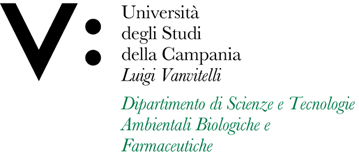Maria Maddalena DI FIORE
Insegnamento di CITOLOGIA E ISTOLOGIA
Corso di laurea in MATEMATICA
SSD: BIO/06
CFU: 8,00
ORE PER UNITÀ DIDATTICA: 64,00
Periodo di Erogazione: Primo Semestre
Italiano
| Lingua di insegnamento | Italiano |
| Contenuti | Biomolecole: carboidrati, amminoacidi, peptidi e proteine, lipidi, acidi nucleici. |
| Testi di riferimento | BIOLOGIA della CELLULA – Edi Ermes e BIOLOGIA dei TESSUTI – Edi Ermes |
| Obiettivi formativi | L’obiettivo del corso è di fornire agli studenti le conoscenze sull'organizzazione morfologica e funzionale della cellula procariotica ed eucariotica e dei principali tessuti animali. |
| Prerequisiti | Il corso inizia con elementari nozioni di base e non richiede alcuna precedente conoscenza particolare |
| Metodologie didattiche | Il corso è strutturato in lezioni teoriche frontali. In particolare sono previste 72 ore di didattica complessiva (9 CFU). Le lezioni si svolgono settimanalmente in aula con l’ausilio di presentazioni power point e di brevi filmati. |
| Metodi di valutazione | Prova scritta e prova orale: |
| Altre informazioni | Lo studente potrà avvalersi del materiale didattico (slides del corso) messo a disposizione dal docente sul sito web di Ateneo |
| Programma del corso | I livelli di organizzazione in biologia: virus, procarioti, eucarioti. |
English
| Teaching language | Italian |
| Contents | Biomolecules: Carbohydrates, Amino acids, Peptides and Proteins, Lipids, Nucleic acids. |
| Textbook and course materials | BIOLOGIA della CELLULA – Edi Ermes e BIOLOGIA dei TESSUTI – Edi Ermes |
| Course objectives | The aim of this course is to provide students with the knowledge morphological and functional organization of the prokaryotic and eukaryotic cell and of the main animal tissues. |
| Prerequisites | The course begins with basic knowledge and does not require any previous special knowledge |
| Teaching methods | The course is structured in theoretical frontal lessons. In particular, there are 72 hours of overall teaching (9 CFU). |
| Evaluation methods | Written and oral examination: |
| Other information | The student can use slides of the course put at available from the teacher on the University website |
| Course Syllabus | The levels of organization in biology: viruses, prokaryotes, eukaryotes. Overview of general biochemistry: water, carbohydrates, amino acids, peptides and proteins, lipids. Nucleic acids (DNA and RNA). |








